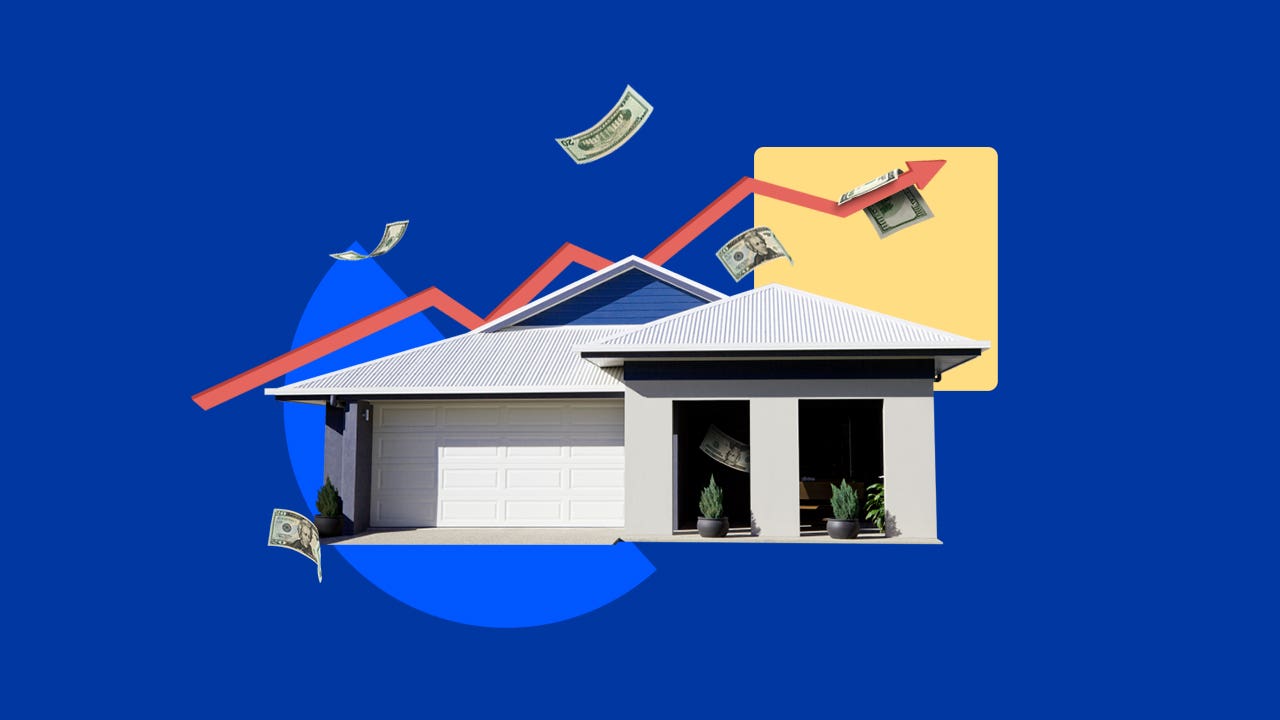Inflation and the housing market: Decoding the latest numbers

New Consumer Price Index (CPI) data suggests that inflation has once again ticked down slightly. Over the past year, the all items index increased 2.4 percent before seasonal adjustment, according to the latest figures from the U.S. Bureau of Labor Statistics, released April 10. This is down from last month’s 2.8 percent, edging closer to the Federal Reserve’s target inflation rate of 2 percent — however, it’s significantly lower than the high point of 9.1 percent in the summer of 2022.
In response to slowing inflation and weakening jobs data, the Federal Reserve cut rates at its final three meetings of 2024 — by half a percentage point in September and another quarter point in both November and December — but held steady in both the January and March meeting.
The housing market and inflation
The shelter category of the CPI, which includes housing costs, remains a stubbornly large contributor to inflation overall. In March, shelter increased 0.2 percent month-over-month, and increased 4.0 percent in the past 12 months. That’s the smallest 12-month increase since November 2021 — but, while price growth is slowing, Americans are still reeling from the extreme housing cost run-up of the past few years.
There's no dismissing the fact that housing affordability continues to be a major pain point for Americans.— Mark Hamrick, Bankrate Senior Economic Analyst
“Shelter continues to be a contributor to the rise in the main gauge of prices at the retail level,” says Mark Hamrick, Bankrate’s senior economic analyst. “There is reason for optimism on this front if home-price gains moderate as expected. But having said that, there’s no dismissing the fact that housing affordability continues to be a major pain point for Americans.”
Nationally, Cotality’s most recent home-price analysis reports that prices rose 2.9 percent from February 2024 to February 2025. It forecasts that price growth will continue, with an increase of 4.2 percent by February 2026. “Despite recent increases in home prices breaking the trend of flat prices, February’s seasonal rise remained subdued compared to pre-pandemic levels, contributing to a decline in overall annual appreciation,” says Selma Hepp, Cotality’s chief economist. “This continued cooling reflects weak homebuying demand as households address economic and policy uncertainty; potential inflation pressures from tariffs; and concerns about job losses and personal financial situation.”
In fact, Fannie Mae’s Home Purchase Sentiment Index (HPSI) decreased by 3.5 points in March, indicating that many people don’t think the housing market will get easier — 77 percent of consumers surveyed said that now is a bad time to buy a home.
What it means for buyers and sellers
Among these decidedly mixed signals, should you buy a home now, or wait? What about selling your home now?
For homebuyers
Housing inventory, while improving, remains a problem for potential buyers across the country. According to the most recent existing home sales data from the National Association of Realtors (NAR), the country had just a 3.5-month supply of inventory in February, still well below the 5 to 6 months needed for a balanced market.
In addition, home prices continue to rise, with NAR’s median sale price in February at $398,400, up 3.8 percent year-over-year and the 20th consecutive month of annual growth.
It’s OK to wait things out instead of buying now to beat further increases, especially if you’re a first-time homebuyer. While you’d be putting off building equity, you might find you’re in a better position to buy in the future, as the market cools and your income can potentially grow.
Even when inflation does come down on a consistent basis, it doesn’t mean prices falling; it just means prices not rising as fast.— Greg McBride, Bankrate Chief Financial Analyst
“Even when inflation does come down on a consistent basis, it doesn’t mean prices falling; it just means prices not rising as fast,” says Greg McBride, Bankrate’s chief financial analyst. “For homebuyers, a more modest pace of appreciation, or even a period of stagnant home prices, can allow for incomes to grow further. Rather than stretching too much now, you may be able to buy a bit more comfortably in a couple of years if your income growth outpaces home price growth. But there are no guarantees.”
That said, life circumstances might require you to buy a home now, regardless of market trends, and that’s as good a reason as any. Just make sure you plan to stay in the home for long enough to come out ahead when you eventually sell.
For home sellers
The ongoing housing shortage may provide an opportunity for sellers to get a better price for their homes. This is good news, but keep in mind that if you then need to buy a new home, the tables will turn, and you’ll be subject to the same circumstances — and high mortgage rates — as other buyers.
And remember, location matters. While median sale prices overall are quite high, not every location is experiencing the same level of price growth. Regionally, the South saw much lower year-over-year price increases than the West, Midwest and Northeast, according to NAR. So, depending on where you live, the local market could be cooler or hotter than average.
Homebuying tips when prices are high
If you’re set on buying soon, here are a few ways you can stretch your housing budget:
- Put your down payment savings in a high-yield account: One upside to inflation and the Fed’s many rate hikes: higher interest rates on savings accounts. If you aren’t already, put the money you’re saving toward a down payment into a high-yield account. Just make sure the account allows you to access your money easily when it comes time for closing — some online savings accounts take three days to deliver your funds when you withdraw.
- Consider a mortgage lender with low or no fees: While it might be more convenient to get a mortgage at your bank, banks typically charge an origination fee, often 1 percent of the amount you borrow. Many non-bank and online lenders don’t, so if you can find a no-fee lender with attractive rates, you’ll keep more money in your pocket.
- Lock in your mortgage rate: When you find a lender and apply for a loan, ask about locking in your rate. Now’s not the time to take a chance on your monthly mortgage payment suddenly soaring in price, right before you’re set to close.
Additional reporting by Jim Probasco
You may also like

Hot inflation is squeezing lower-income households’ emergency funds





